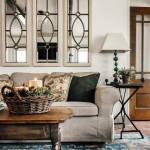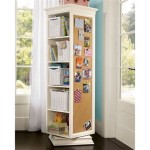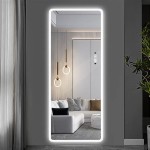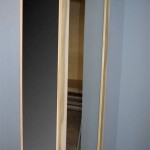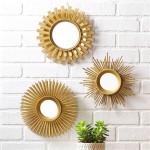How to Hang a Mirror on the Ceiling Without a Stud
Hanging a mirror on the ceiling can dramatically alter a room's aesthetic, creating the illusion of greater space and enhanced lighting. This ambitious home improvement project presents unique challenges, especially when a structural stud is not conveniently located where the mirror needs to be installed. This article provides a comprehensive guide to securely hanging a mirror from the ceiling without relying on studs, detailing the necessary tools, techniques, and considerations for a successful and safe installation.
Before commencing the installation process, it is crucial to understand the nature of the ceiling material. Modern ceilings are generally constructed from drywall, also known as sheetrock. Drywall is a relatively lightweight material but lacks the inherent strength required to support the weight of a mirror, particularly larger or heavier ones. Older buildings may have plaster ceilings, which offer slightly more resistance but still necessitate specialized hanging methods. Accurately identifying the ceiling type dictates the choice of appropriate anchors and installation techniques.
Safety is paramount throughout the entire process. Wearing safety glasses is essential to protect the eyes from falling debris during drilling and anchor installation. Additionally, the use of work gloves helps maintain a secure grip on tools and materials. It is highly recommended to have a helper present, especially when handling larger mirrors, to prevent accidental drops and injuries.
Selecting the Right Anchors
The success of hanging a mirror on the ceiling without a stud hinges on selecting the appropriate type of anchor. Numerous anchor options are available, each designed for specific weight capacities and ceiling material types. The weight of the mirror is a critical factor in determining the required anchor strength. Always overestimate the mirror's weight to provide an ample safety margin.
Toggle Bolts: Toggle bolts are among the strongest anchor options for drywall and plaster ceilings. They consist of a bolt and a wing-like mechanism that folds flat for insertion through a pre-drilled hole. Once inside the ceiling cavity, the wings spring open, distributing the weight over a larger surface area. Toggle bolts are suitable for heavier mirrors but require a larger hole for insertion, which may be a visual drawback.
Molly Bolts (Sleeve Anchors): Molly bolts, also known as sleeve anchors, are another robust option. They function by expanding a sleeve behind the drywall or plaster as the bolt is tightened. This expansion creates a secure grip, distributing the weight load. Molly bolts are relatively easy to install and offer a clean appearance. However, they are generally less strong than toggle bolts and are better suited for medium-weight mirrors.
Drywall Anchors (Self-Drilling): Self-drilling drywall anchors, often made of plastic or metal, are designed for lighter mirrors. These anchors are screwed directly into the drywall without requiring a pilot hole. They are a quick and convenient option for lightweight applications, but their weight capacity is limited, and they are not recommended for heavier or more valuable mirrors.
Plaster Washers: For plaster ceilings, plaster washers can be used in conjunction with other anchor types to provide additional support and prevent the anchor from pulling through the plaster. Plaster washers are large, flat washers that distribute the load over a wider area. They are particularly useful when the plaster is brittle or damaged.
Before committing to a specific anchor type, it is prudent to perform a test installation in an inconspicuous area of the ceiling. This allows for verifying the anchor's suitability and assessing the ceiling material's integrity. The test area should be as similar as possible to the location where the mirror will be installed.
Preparing the Ceiling and the Mirror
Once the appropriate anchors have been selected, the next step involves preparing the ceiling and the mirror for installation. Proper preparation ensures a secure and aesthetically pleasing result.
Marking the Location: Accurately mark the desired location for the mirror using a measuring tape, level, and pencil. Double-check the measurements to ensure the mirror will be positioned correctly. Consider using a laser level for increased accuracy, especially for larger installations. Ensure that the marked location is free from any obstructions, such as electrical wiring or plumbing.
Drilling Pilot Holes: Using a drill and a drill bit that matches the size specified by the anchor manufacturer, carefully drill pilot holes at the marked locations. Exercise caution to avoid damaging any hidden wiring or plumbing. If unsure about the presence of utilities, consider using a stud finder with AC wire detection capabilities.
Preparing the Mirror: Inspect the back of the mirror to determine the best method for attaching hanging hardware. Many mirrors come with pre-installed D-rings or wire. If not, suitable D-rings or wire should be securely attached to the back of the mirror using appropriate hardware. The attachment points should be strong enough to support the mirror's weight without risk of failure. Consider using mirror mastic or adhesive pads in addition to mechanical fasteners for added security.
Surface Preparation: Ensure the ceiling surface around the pilot holes is clean and free from dust, dirt, and debris. This will improve the adhesion of any adhesive pads or mounting brackets.
Consider Lighting: If planning to install lighting around the mirror, consider running the electrical wiring before hanging the mirror. This makes it easier to conceal the wiring and avoids having to work around the mirror later.
Installing the Mirror and Hardware
With the ceiling and mirror prepared, the installation process can proceed. This step requires careful attention to detail to ensure a secure and level installation.
Inserting the Anchors: Carefully insert the chosen anchors into the pre-drilled pilot holes following the manufacturer's instructions. For toggle bolts, fold the wings flat and push them through the hole until they spring open behind the ceiling. For molly bolts, insert the bolt and tighten it until the sleeve expands. For self-drilling drywall anchors, simply screw them into the drywall until they are flush with the surface.
Attaching Hanging Hardware: Attach the appropriate hanging hardware to the installed anchors. This may involve screwing hooks or threaded rods into the anchors. Ensure that the hardware is securely fastened and can support the weight of the mirror. Use washers to distribute the load and prevent the hardware from pulling through the ceiling.
Hanging the Mirror: Carefully lift the mirror and align the hanging hardware on the back of the mirror with the hardware installed on the ceiling. Gently lower the mirror onto the hooks or rods, ensuring that it is securely supported. Have a helper present to assist with this step, especially for larger mirrors.
Leveling the Mirror: Use a level to ensure that the mirror is hanging straight. If necessary, adjust the hanging hardware or add shims to achieve a perfectly level installation. A slightly tilted mirror can create a distorted reflection and be visually distracting.
Securing the Mirror: Once the mirror is level, double-check that all hanging hardware is securely fastened and that the mirror is stable. Consider using safety wire or chains as an additional precaution, especially in areas prone to seismic activity or strong vibrations. The safety wire or chains should be attached to both the mirror and the ceiling anchors, providing a backup in case of primary hardware failure.
Concealing Hardware: Depending on the design aesthetic, consider concealing the hanging hardware with decorative covers or moldings. This can enhance the overall appearance and create a more polished finish.
Final Inspection: Conduct a final inspection of the installation, checking for any loose hardware, unevenness, or other potential issues. Gently tug on the mirror to ensure it is securely attached. If any problems are identified, address them immediately to prevent future accidents.
Hanging a mirror on the ceiling without a stud presents a unique set of challenges, but following these steps will ensure a safe and visually appealing result. Always prioritize safety and select the appropriate anchors for the mirror's weight and ceiling type. Proper preparation and attention to detail are essential for a successful installation that enhances the room's aesthetic for years to come.

How To Hang Heavy Items Without A Stud

How To Hang A Mirror Without Hooks On The Back

No Stud Drywall Picture Hangers Stas Hanging Systems

How To Hang A Picture Or Mirror Easily Tiktok

How To Hang A Heavy Mirror

Ook 1 Pieces 200 Lbs No Stud Drywall Picture Hanging Hook Hd Hanger 12 9984736 The Home Depot

3 Simple Ways To Hang A Mirror On Wall Without Nails Wikihow

How To Install A Mirror Without Frame Merrypad

5 Ways To Hang Anything From The Ceiling Super Strong Easily 100 Lbs

How To Hang A Heavy Mirror With Pictures Wikihow
